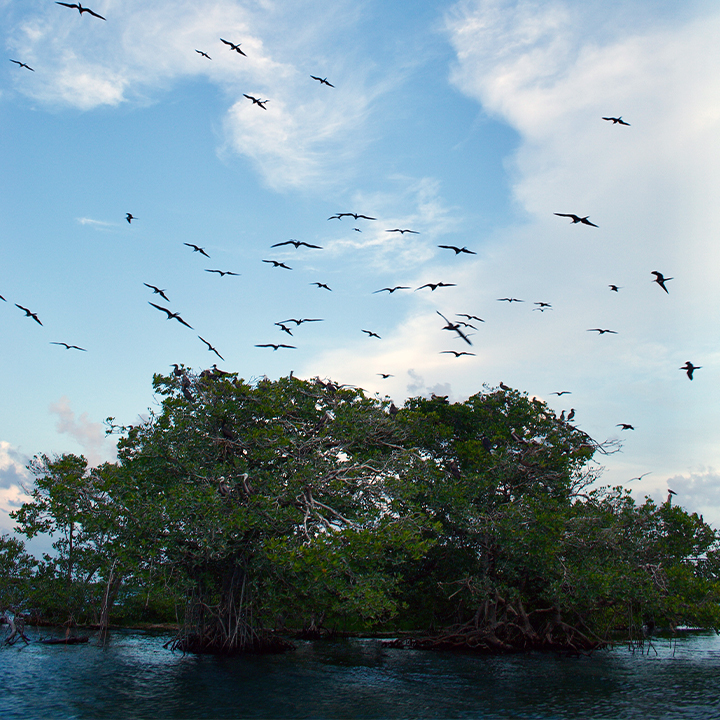Can Mangroves Experience Too Much of a Good Thing?
Mangroves are found globally in tropical and subtropical regions; you have probably noticed the red, black and white mangroves that line the coastal margins of the Indian River Lagoon and St Lucie Estuary. These natural ecosystems are, at their heart, a barometer for overall ecological health of a system. What we can learn from one can almost certainly be applied to another similar system, even if the distance between them spans oceans. Mangroves have adapted to living in waters with low nutrient levels, and the addition of a limiting, or beneficial nutrient can enhance the productivity of these plants. However, large amounts of nutrients can be detrimental to the long-term health and maintenance of these important ecosystems.
Mangroves are a habitat for many bird species and provide support for permanent and migratory bird colonies, termed rookeries, around the world. These birds forage for food and return to their nests where they deposit guano, which is rich in nutrients like nitrogen and phosphorous. Nitrogen has been shown to be a limiting nutrient in mangrove ecosystems and the highly concentrated nature of bird rookery populations provides a significant amount of nitrogen to nutrient starved mangroves. This is a natural and important process in coastal systems and can be used as a proxy by scientists to study the impacts of human induced nutrient loading in mangrove ecosystems.
Recently, Dr. Loraé T. Simpson, our Director of Scientific Research and Conservation at Florida Oceanographic, and her colleagues compared mangrove health on bird rookery islands (long-term nutrient loading) to islands without resident bird populations (control islands with no nutrient loading) in Belize. In their peer-reviewed paper recently published in Oecologia, they found that rookery islands were decreasing in area 13 times faster than control islands. This suggests that mangrove growth and island resilience is affected by high nutrient loading. As the mangroves shift growth patterns, they become more susceptible to environmental stressors and extreme events (i.e., sea-level rise, tropical storms). The weakened trees fall into the water leading to shoreline erosion and landward retreat of the coastal margins. Over time, this cycle can lead to the disappearance of an island if it is not able to repair itself. This work forecasts out the implications of human induced nutrient loading on these important ecosystems in the Indian River Lagoon and St Lucie Estuary.
The knowledge Dr. Simpson and her colleagues gathered in the field is invaluable to the research she conducts on mangrove health in the Indian River Lagoon and St Lucie Estuary. She plans to expand her research to include local mangrove islands to get a better sense of how high nutrient loading caused by humans is affecting the health and maintenance of these important ecosystems.
Read the research paper

